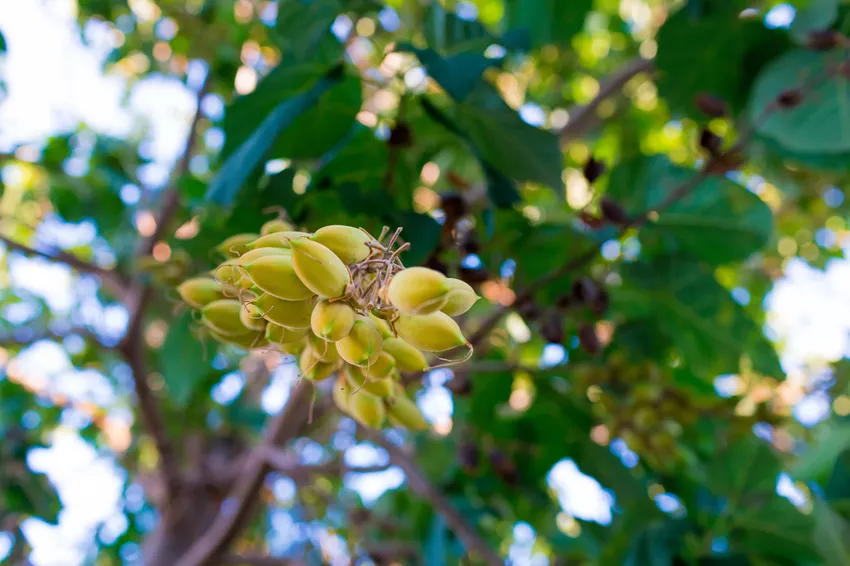When it blooms, the blue bell tree is a real feast for the eyes. Later, the pink to blue flowers develop into egg-shaped capsule fruits, which turn from green to brown as they ripen and remain on the tree over the winter.
 The fruits of the blue bell tree are not edible
The fruits of the blue bell tree are not edible
The fruits of the Paulownia tomentosa, as the blue bell tree is also called, resemble nuts, but are not suitable for consumption. They are considered inedible to slightly poisonous, also for dogs and other animals.
However, since the fruits are not particularly attractive, they usually do not need to worry. It is unlikely that children or animals will nibble on them, especially since the fruits only fall from the tree in spring when they are already completely dry. The seeds are also considered slightly poisonous. However, they are quite inconspicuous and not very tempting.
Are the leaves of the blue bell tree also inedible?
Unlike the fruits of the Paulownia tomentosa, the leaves of this tree are quite edible. In their Asian homeland, consumption is quite common and they are considered tasty. The taste of the rather large, heart-shaped leaves is similar to that of fresh spinach. You can also use the foliage as animal feed.
In contrast to many other deciduous trees, the blue bell tree does not have any autumn colors. The leaves remain dark green until they fall. Only after flowering in spring does the tree sprout new leaves.
The essentials in brief:
- Fruits inedible, possibly even slightly poisonous
- Edible leaves, taste similar to spinach
- Leaves can also be used as animal feed
tips
The leaves of the bluebell tree are among the largest leaves you can find on trees, and they are even edible for humans and animals.